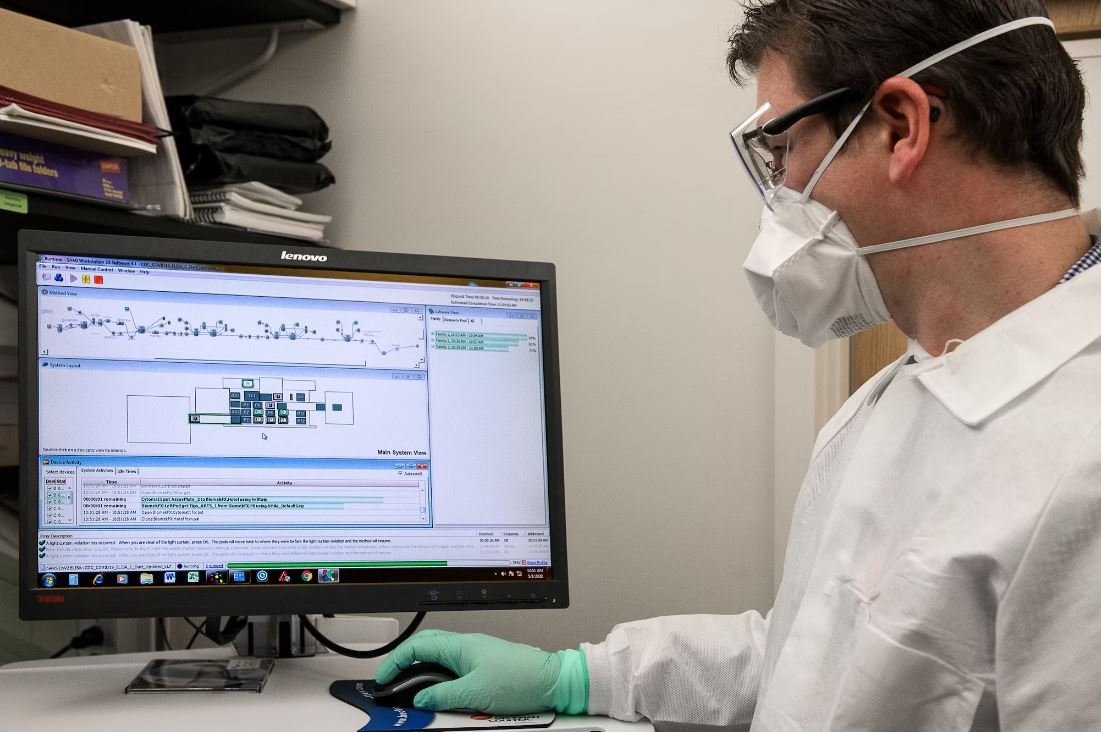What Is AI Video?
Artificial Intelligence (AI) has revolutionized various industries, and video production is no exception. AI video technology leverages machine learning algorithms to create, edit, and enhance videos in a way that mimics human-like intelligence. This technology allows businesses and individuals to produce professional-quality videos faster, more efficiently, and with less effort.
Key Takeaways:
- AI video technology uses machine learning algorithms to create, edit, and enhance videos.
- It enables fast and efficient video production with professional-quality results.
- AI video technology reduces the manual effort and time required for video editing and production.
- It enhances video content creation by automating processes and adding intelligent features.
- AI video tools offer a range of features like scene recognition, automated captions, and personalized recommendations.
AI video technology is capable of analyzing and understanding video content in a way that traditional video editing software cannot. It can automatically detect objects, scenes, and actions within a video. By analyzing the video data, AI algorithms can identify relevant segments, create cut points, and even suggest the best edits.
Imagine being able to produce a professional-looking video with just a few clicks.
AI video technology has made significant advancements in automating video editing tasks. It can analyze a video, understand the intent, and automatically generate high-quality edits that match the style and tone of the video. This not only saves time but also ensures consistent video quality.
| AI Video Benefits |
|---|
| Reduces manual effort and time required for video editing |
| Automatically generates high-quality video edits |
| Enables consistent video quality and style |
With AI video technology, video editing becomes more accessible and less daunting for everyone.
In addition to editing, AI video technology can enhance videos by adding intelligent features. For example, it can generate automated captions based on speech recognition, saving the time and effort needed to transcribe and caption videos manually. AI algorithms can also analyze viewer preferences and provide personalized recommendations, improving the overall user experience.
Advantages of AI Video Technology:
- Efficient and automated video editing
- Automated captions for improved accessibility
- Personalized recommendations for enhanced user experience
Moreover, AI video tools can analyze video content in real-time, allowing for dynamic and adaptive editing. They can detect changes in the visual or audio elements, identify potential issues, and automatically make adjustments to maintain a seamless and engaging video experience.
| Real-Time AI Video Editing |
|---|
| Automatically detect and adjust changes in video content |
| Maintain a seamless and engaging video experience |
AI video technology empowers content creators to produce more engaging and personalized videos.
In conclusion, AI video technology has transformed the way we create and edit videos. It offers numerous benefits such as efficient video production, automated editing, personalized recommendations, and real-time editing capabilities. By leveraging AI algorithms, businesses and individuals can enhance their video content while saving time and effort.

Common Misconceptions
Misconception 1: AI is capable of human-like intelligence
Many people believe that AI is close to achieving human-like intelligence, capable of thinking and reasoning just as we do. However, this is a misconception. AI systems today are designed to perform specific tasks based on patterns and data, but they lack the ability to understand context, emotions, and abstract concepts like humans do.
- AI systems are limited to performing tasks within their programmed capabilities.
- They cannot think creatively or understand complex human emotions and contexts.
- AI’s intelligence is focused on specific domains and lacks the broader understanding of the world that humans possess.
Misconception 2: AI will replace human jobs entirely
One of the most common fears surrounding AI is that it will lead to massive job losses, with AI systems replacing human workers in various industries. While AI has the potential to automate certain tasks, it is unlikely to completely replace humans in many job roles.
- AI is more likely to augment human work rather than replace it entirely.
- AI can perform repetitive and mundane tasks, freeing up humans to focus on higher-level work that involves critical thinking and creativity.
- Certain job roles, such as those requiring empathy and human interaction, are less likely to be replaced by AI.
Misconception 3: AI is infallible and unbiased
It is often assumed that AI systems are entirely objective and unbiased in their decision-making. However, this is not the case. AI algorithms are developed by humans and trained on data that can contain bias and reflect societal prejudices. Therefore, AI systems can perpetuate and amplify existing biases.
- AI systems may inadvertently perpetuate discrimination and bias present in the training data.
- Unintentional biases can affect decisions made by AI systems, such as in hiring processes or criminal justice systems.
- Addressing bias in AI algorithms requires careful consideration and ongoing efforts to ensure fairness and inclusivity.
Misconception 4: AI has consciousness and emotions
Sometimes people mistakenly assume that AI systems have consciousness and emotions similar to humans. However, AI is merely a set of algorithms and mathematical models designed to process and analyze data, without any subjective experience or emotional understanding.
- AI lacks consciousness and subjective experiences that define human intelligence.
- AI systems do not possess emotions or feelings, as they are fundamentally different from human cognitive processes.
- Any appearance of emotions in AI is a result of programmed responses based on data.
Misconception 5: AI is a threat to humanity
Hollywood movies often depict AI as a threat to humanity, leading to a popular misconception that AI will eventually take over the world and endanger human existence. This view is primarily based on fictional scenarios and does not accurately reflect the current state of AI.
- AI technologies are created and controlled by humans, limiting their capacity for independent action.
- AI systems are programmed to follow rules and objectives set by humans, preventing them from acting against human interests.
- Maintaining ethical standards and responsible development practices help ensure AI is used for the benefit of humanity.

The Rise of AI Video
AI Video is revolutionizing the way we capture, analyze, and interpret visual data. This article explores various elements of AI Video through ten descriptive tables showcasing the incredible advancements and capabilities of this technology.
AI Video Application Fields
AI Video finds its applications in diverse fields such as surveillance, medical imaging, autonomous vehicles, and more. The table below illustrates some of the key fields where AI Video is being utilized.
| Field | Description |
|---|---|
| Surveillance | AI Video enhances security systems by detecting suspicious activities and tracking individuals. |
| Medical Imaging | AI Video aids in diagnosing diseases and analyzing medical images with greater accuracy. |
| Autonomous Vehicles | AI Video technologies enable self-driving cars to perceive and interpret their surroundings. |
AI Video Benefits
AI Video offers a multitude of benefits, from improved efficiency to increased safety. The following table highlights some of the significant advantages of AI Video.
| Benefit | Description |
|---|---|
| Efficiency | AI Video automates tasks that would otherwise be time-consuming, leading to increased productivity. |
| Safety | AI Video enhances safety by alerting authorities to potential threats or hazardous situations. |
| Accuracy | AI Video algorithms have the capability to analyze visual data with remarkable precision. |
Popular AI Video Technologies
Various AI Video technologies have gained significant popularity due to their innovative features. This table explores a few of the most widely used AI Video technologies in different domains.
| Technology | Domain |
|---|---|
| Object Detection | Surveillance, self-driving cars |
| Facial Recognition | Security systems, biometric authentication |
| Medical Imaging Analysis | Healthcare diagnostics, disease detection |
AI Video Challenges
While AI Video offers immense potential, it also faces certain challenges. This table highlights a few key challenges faced by AI Video developers and researchers.
| Challenge | Description |
|---|---|
| Data Privacy | Ensuring the privacy and security of personal information collected through AI Video systems. |
| Ethics | Addressing ethical concerns surrounding the use of AI Video in areas such as surveillance and decision-making. |
| Algorithm Bias | Avoiding biases in AI Video algorithms that may impact decision-making processes. |
AI Video Future Trends
The future of AI Video holds immense potential for further advancements and innovations. Explore the following table to learn about the anticipated trends in the field of AI Video.
| Trend | Description |
|---|---|
| Real-time Video Analytics | AI Video systems will be capable of processing and analyzing video data in real-time. |
| Emotion Recognition | AI Video will possess the ability to accurately detect and understand human emotions from visual cues. |
| Improved Human Interactions | Advancements in AI Video will allow for more seamless and natural interactions between humans and machines. |
AI Video Impact on Jobs
AI Video technologies are transforming various job sectors, creating new roles while potentially eliminating others. Discover the impact of AI Video on jobs in this illustrative table.
| Job Sector | Impact |
|---|---|
| Manufacturing | Automating certain tasks, resulting in reduced manual labor requirements. |
| Transportation | Introduction of autonomous vehicles potentially impacting traditional driving jobs. |
| Security | Augmenting security personnel by employing AI Video systems for surveillance. |
AI Video Limitations
Despite its remarkable capabilities, AI Video has certain limitations. The table below outlines a few limitations faced by AI Video technologies.
| Limitation | Description |
|---|---|
| Incomplete Data Understanding | AI Video systems might fail to correctly interpret visual data if it lacks proper context. |
| High Computational Requirements | AI Video algorithms often demand significant computational power, limiting their use on certain devices. |
| Environmental Factors | Environmental conditions, such as poor lighting or adverse weather, can impact AI Video performance. |
Conclusion
In summary, AI Video is transforming various industries with its applications, benefits, and technological advancements. It has the potential to revolutionize surveillance, medical imaging, and autonomous vehicles. However, challenges such as privacy concerns, ethical considerations, and algorithm bias need to be addressed. The future of AI Video holds promise with real-time analytics, emotion recognition, and improved human-machine interactions. As AI Video evolves, it will reshape job sectors and bring both opportunities and disruptions. Despite some limitations, the incredible growth and potential of AI Video give rise to exciting possibilities in the fields of computer vision and visual data analysis.
Frequently Asked Questions
What is AI?
AI, or Artificial Intelligence, refers to the simulation of human intelligence in machines that are programmed to mimic and execute tasks that would typically require human intelligence.
How does AI work?
AI systems work by using algorithms and large amounts of data to analyze, learn, and make decisions or predictions. These algorithms are designed to identify patterns, learn from them, and adjust their output accordingly.
What are the applications of AI?
AI has a wide range of applications across various industries, including healthcare, finance, transportation, manufacturing, and entertainment. Some common applications include virtual assistants, recommendation systems, autonomous vehicles, and fraud detection systems.
What are the different types of AI?
There are generally two types of AI: Narrow AI and General AI. Narrow AI is designed to perform specific tasks and is programmed to excel in those tasks. General AI, on the other hand, demonstrates human-level intelligence and can perform any intellectual task that a human can do.
What are the benefits of AI?
The benefits of AI include increased efficiency, improved accuracy, enhanced productivity, better decision-making, and the ability to handle complex tasks and large amounts of data. It also has the potential to revolutionize various industries and improve our everyday lives.
What are the challenges and risks associated with AI?
AI presents several challenges and risks, including job displacement, data privacy concerns, bias and ethical issues, cybersecurity threats, and the potential for misuse or abuse of AI systems. It is important to address these challenges to ensure the responsible and beneficial deployment of AI.
How is AI impacting the job market?
AI is expected to automate certain jobs, leading to potential job displacement in some sectors. However, it is also expected to create new job opportunities, as AI technology will require skilled professionals to develop, maintain, and operate these systems.
Is AI capable of replacing human workers?
While AI has the potential to automate certain tasks and jobs, it is unlikely to completely replace humans in the workforce. Instead, AI is more likely to augment human capabilities, allowing individuals to focus on higher-level tasks that require creativity, empathy, and complex decision-making.
How can businesses implement AI?
Businesses can implement AI by identifying areas in their operations where AI can add value, such as automating repetitive tasks, improving customer experience, or optimizing supply chain operations. They can then collaborate with experts and deploy AI systems accordingly.
What is the future of AI?
The future of AI is promising, with continued advancements and integration into various aspects of our lives. It is expected to play a significant role in areas like healthcare, transportation, education, cybersecurity, and more. However, it is important to balance AI development with ethical considerations and address potential challenges as they arise.




